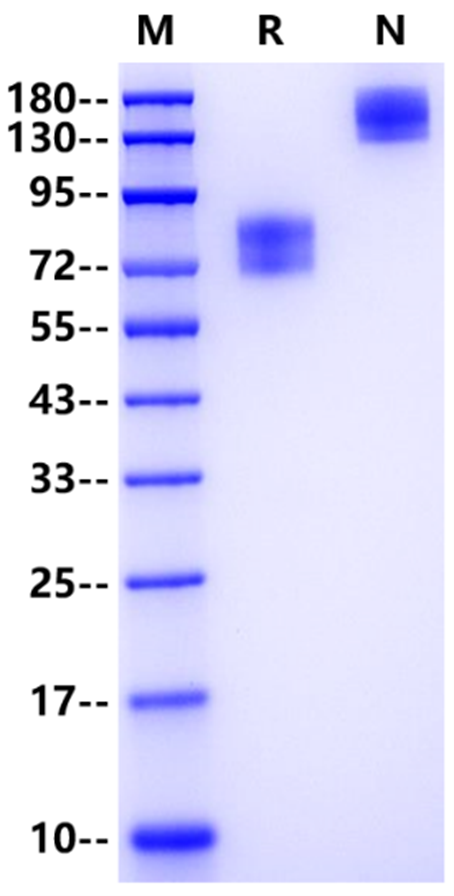Leu25-Gly257, with C-terminal Human IgG1 Fc LIIGFGISGKHFITVTTFTSAGNIGEDGTLSCTFEPDIKLNGIVIQWLKEGIKGLVHEFKEGKDDLSQQHEMFRGRTAVFADQVVVGNASLRLKNVQLTDAGTYTCYIRTSKGKGNANLEYKTGAFSMPEINVDYNASSESLRCEAPRWFPQPTVAWASQVDQGANFSEVSNTSFELNSENVTMKVVSVLYNVTINNTYSCMIENDIAKATGDIKVTDSEVKRRSQLQLLNSGIEGRMDPKSSDKTHTCPPCPAPELLGGPSVFLFPPKPKDTLMISRTPEVTCVVVDVSHEDPEVKFNWYVDGVEVHNAKTKPREEQYNSTYRVVSVLTVLHQDWLNGKEYKCKVSNKALPAPIEKTISKAKGQPREPQVYTLPPSRDELTKNQVSLTCLVKGFYPSDIAVEWESNGQPENNYKTTPPVLDSDGSFFLYSKLTVDKSRWQQGNVFSCSVMHEALHNHYTQKSLSLSPGK
72-85kDa
Reconstitute at 0.1-1 mg/ml according to the size in ultrapure water after rapid centrifugation.
1. Yi, K.H. and L. Chen (2009) Immunol. Rev. 229:145. 2. Salceda, S. et al. (2005) Exp. Cell Res. 306:128. 3. Zang, X. et al. (2003) Proc. Natl. Acad. Sci. 100:10388.
V-set domain-containing T-cell activation inhibitor 1 (VTCN1) is also known as Immune costimulatory protein B7-H4, Protein B7S1, T-cell costimulatory molecule B7x, B7H4, which belongs to the immunoglobulin superfamily and BTN/MOG family. VTCN1 contains two Ig-like V-type (immunoglobulin-like) domains. The expression of VTCN1 is up-regulated by IL6 and IL10 and is inhibited by GM-CSF and IL4 on antigen-presenting cells (APCs). VTCN1/B7-H4 negatively regulates T-cell-mediated immune response by inhibiting T-cell activation, proliferation, cytokine production and development of cytotoxicity. VTCN1 involved in promoting epithelial cell transformation.

1μg (R: reducing conditions, N: non-reducing conditions).